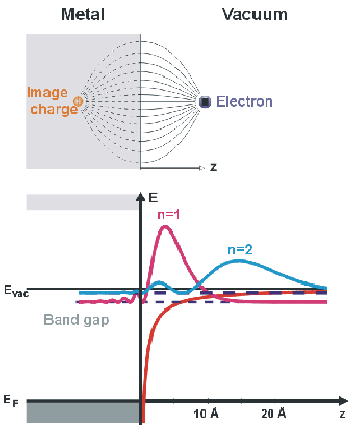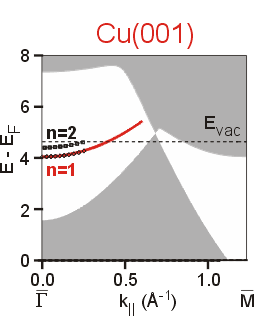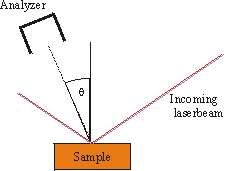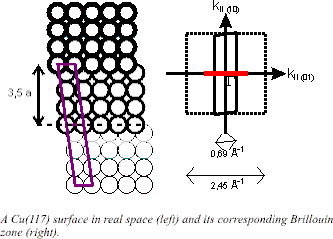Image-Potential States
The force an electron feels is in front of a conductive surface at a distance z is equivalent to the force between two electrons with opposite charges separated by a distance 2z. The corresponding attractive image potential is therefore given by
If it is unlikely that the electron penetrates into the bulk due to a band gap, bound states will be formed and the potential results in energy states similar to these of a hydrogen atom:
The quantum defect a arises because of the finite probability of the electron penetrating in the bulk.







